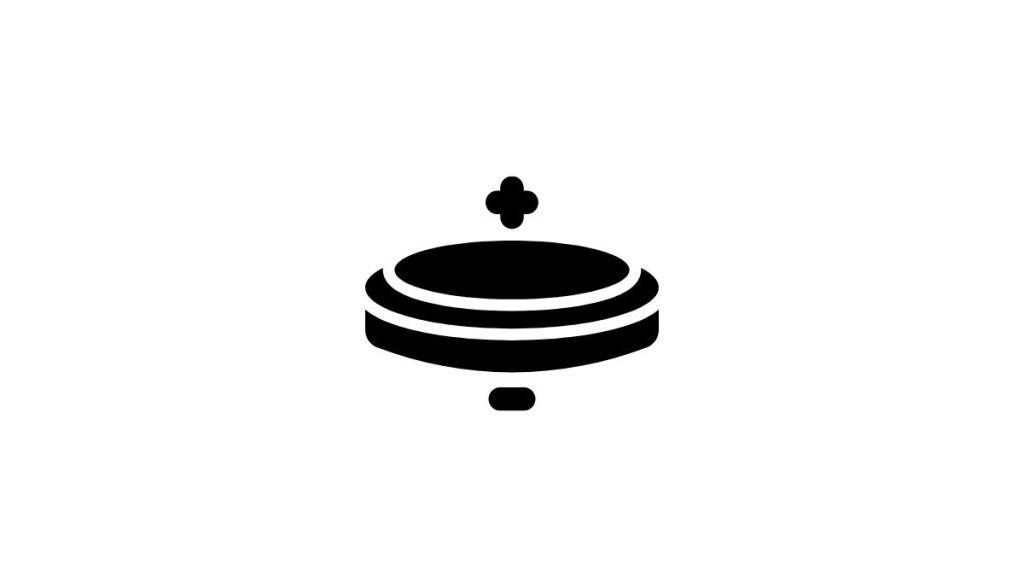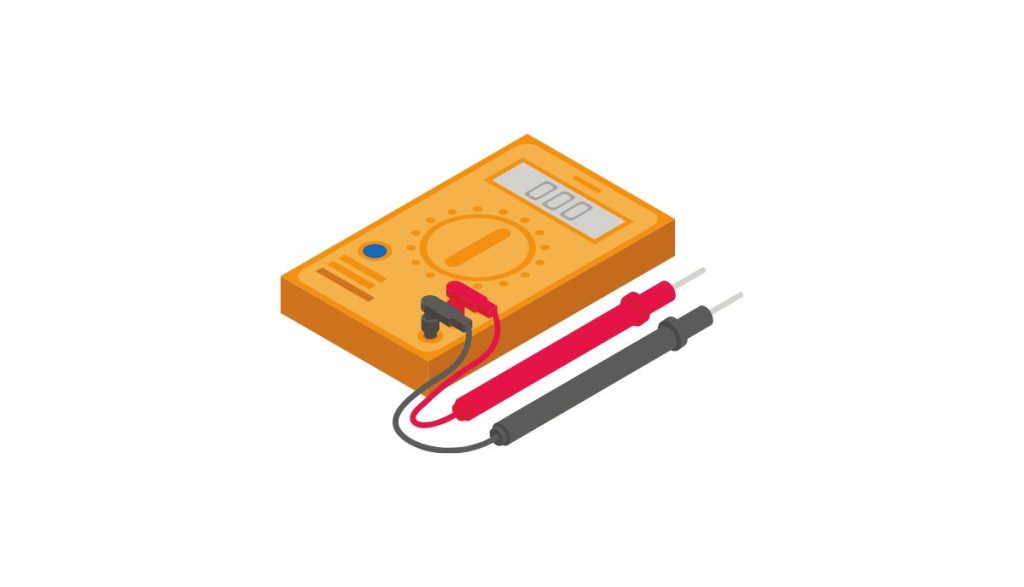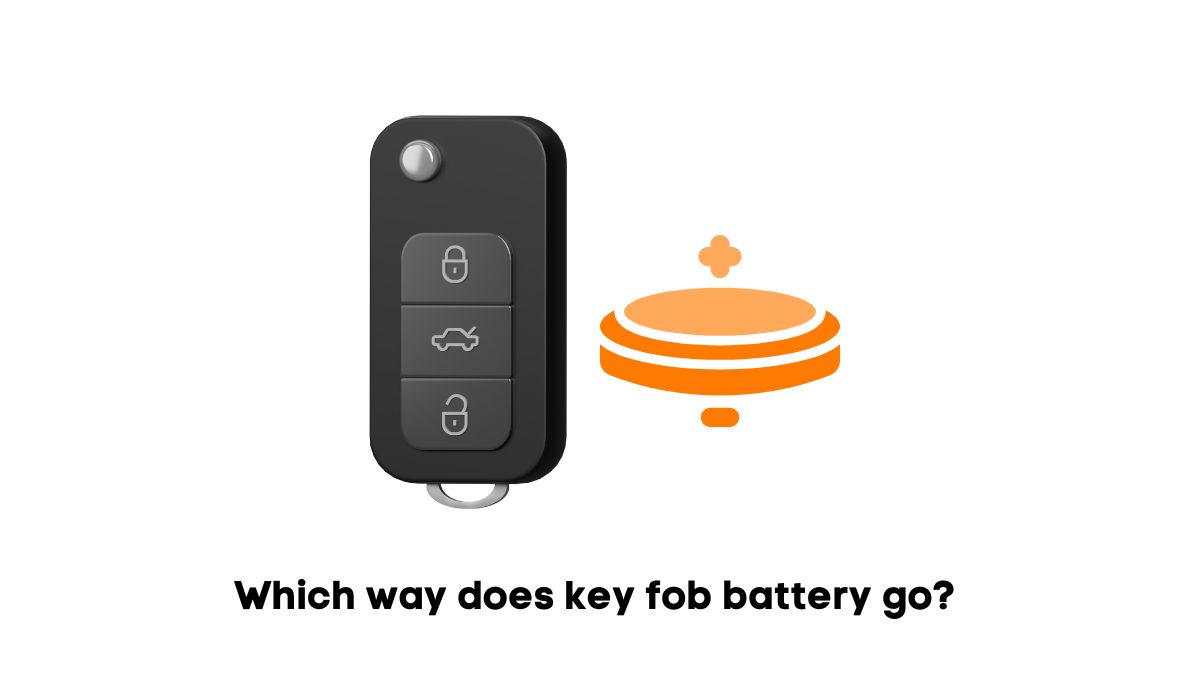A battery’s orientation refers to its placement in the key fob. You can’t insert batteries into a device in any random orientation you want. Each battery terminal must connect to the correct contact point in the device.
Otherwise, the current won’t flow. Key fob batteries are no different. If you just replaced a depleted battery, but the key fob refuses to work, consider the possibility that you got the orientation wrong.
Many manufacturers reveal the polarity and correct orientation on the battery’s packaging. Additionally, you can find this information in the care or key fob manual. If you’ve ever inserted batteries of any type into an electronic device, you cannot fail to get the key fob battery’s orientation right.
Understanding The Positive (+) And Negative (-) Terminals On The Key Fob Battery
When was the last time you handled a key fob battery? If you’ve never seen one, this is everything you should know:

- Key fobs use coin cell batteries. Some people call them button batteries because they are flat and circular. Usually, they have a diameter of 5mm – 25mm and a height of 4mm – 6mm, which makes them highly portable.
- Manufacturers use coin cell batteries because they can provide adequate power to electronic devices continuously over an extended period due to their low self-discharge rate. Even when you don’t use them, coin cell batteries will retain their power for a long time.
- Coin cell batteries have an anode (releases ions), cathode (accepts ions), electrolyte (allows the ions to move between the terminals), separator (keeps the anode and cathode apart, allowing the ions to pass but barring the electrons), enclosure (protects the internal components), and a sealant. The anode and cathode matter to the orientation and polarity discussion.
- Coin cell batteries are not restricted to key fobs. They appear in everything from watches and toys to fitness trackers and remote controls. They even appear in computers, providing power to the CMOS memory.
- You can find coin cell batteries in various sizes, including CR2032, CR2450, CR2025, and CR2016.
- Usually, you find all the information that matters to you on the back of the battery. Core Electronics has a picture of a coin cell battery’s back, the kind you see in a key fob. It mentions the width, battery chemistry, height, and polarity. This information allows you to not only match each key fob to the correct battery size but also to orient the battery correctly.
- Coin cell batteries persist in society because of their compact size, long lifespan, low self-discharge rate, and reliability.
- As you may have guessed, polarity refers to the positive and negative terminals. To be more specific, the term refers to the electrical potential at the battery’s ends. According to this paper from Oregon State University, conventional current runs from positive to negative, while electron current goes the other way (negative to positive). They included a diagram that visually represents this concept.
- This flow of current is the reason why the positive and negative terminals matter. You must orient the battery correctly, connecting each terminal to the appropriate contact point. Otherwise, the current will not flow.
Visual Clues Or Markings On The Key Fob Or Battery Compartment Indicating The Correct Orientation
Now that you know why the orientation matters, how do you identify the positive and negative terminals? Look for the following:
- + (Positive) / – (Negative) Markings
As was noted earlier, key fob batteries are marked. One side has a plus sign, the other a minus symbol. They refer to the positive and negative terminals. Some batteries are marked with the words ‘Positive’ and ‘Negative’ to eliminate the possibility of confusion.
- Shapes (Flat VS Concave)
Have you studied a coin cell battery? Yes, it looks like a coin or button. But unlike coins and buttons, a coil cell battery’s sides are not the same. The positive side is flat and smooth. The negative side is curved and peppered with concave and convex points.
Even if the markings fade or rub off, you cannot fail to identify the differences in the shape. The coin cell battery’s shape won’t change unless extreme conditions warp it.
Tips For Aligning The Positive And Negative Terminals Correctly
Key fob battery terminals are not difficult to identify, and it won’t take long to determine the correct orientation. But if you encounter trouble, keep the following in mind:
1). Use A Multimeter

The multimeter will resolve any confusion you have once and for all. It will definitively identify the polarity. You use it by connecting the black and red probes to the battery’s sides. According to Grepow, the multimeter shows a positive value when the red and black probes touch the positive and negative electrodes, respectively.
You see a negative value when the probes switch (red touching negative and black touching positive).
2). Look At The Key Fob Battery Compartment
In the video, the mechanic removes the battery compartment’s cover. The cover has a plus (+) sign on the inside, showing that the positive terminal should face upward when you insert the battery.
The smaller, curved section (negative) faces downward. Admittedly, once you find the polarity markings on the battery, you can just match them to the markings on the compartment and its cover. But if you can’t see the battery markings, it is enough to remember that a battery’s large, flat side faces up.
3). Use The Previous Battery
One assumes that you’re changing the battery because it died. That means your key fob has an old battery. What is the old battery’s orientation? Take a picture before removing the old battery, placing particular emphasis on the top section.
Is it flat or curved? Do you see markings, such as a plus or minus sign? You can’t go wrong by matching the orientation of the new battery to the direction of the old battery.
Common Mistakes To Avoid When Inserting A Key Fob Battery
- Pay attention to the metallic tabs in the battery compartment. Some people bend or break them while prying the battery out. Don’t forget to bend them back. Otherwise, the battery may not work.
- Don’t throw the old battery away until you find a replacement. The old battery has markings that can point you toward the correct replacement.
- Don’t ignore the manual. The manufacturers in your country may use distinct markings to identify the positive and negative terminals that don’t appear elsewhere. The manual knows best. Listen to what it says.
- Don’t forget to snap the cover firmly over the battery compartment. Otherwise, the battery will fall out.
Potential Consequences Of Inserting The Battery In The Wrong Orientation
Usually, reversed polarities are dangerous because the resulting shock can cause severe injuries, possibly even death.
However, that concern doesn’t apply to coin cell key fob batteries. Inserting the battery in the wrong orientation will prevent the current from flowing. As a result, the key fob won’t work. You won’t damage the key fob.
Additionally, the voltage is too low to harm you. This mistake is harmless. If anything, it allows you to fix the problem. You only have two orientations to try. If the first one fails (the key fob refuses to work), try the second one.
Troubleshooting Steps If The Key Fob Doesn’t Work After Battery Insertion
When the key fob stops working, consumers typically respond by changing the battery. But what do you do when the key fob refuses to work even though you changed the battery? Turn your attention to the following culprits:
- You inserted the battery the wrong way. Open the key fob and remove the battery. Flip it around before putting it back. The key fob should work. If the fault persists, continue your search.
- The key has probably sustained damage. Most people keep a spare set of keys on hand. Move the batteries to the second fob. If the second fob works, the first fob is defective. Replace it.
- If the key fob is new, you might have forgotten to program it. If the key is old, you have a corrupted chip. Either way, visit the dealership. They can repair the key fob and perform any reprogramming you need.
- Are the buttons worn out? Maybe they are stuck or damaged. A locksmith will tell you whether the buttons can be fixed or if you need a new fob.
- The problem could lie with the car. If the spare fob refuses to work, you need a technician to check for a broken door lock mechanism, frayed wiring, defective computer, bad sensors, etc.

